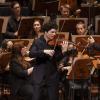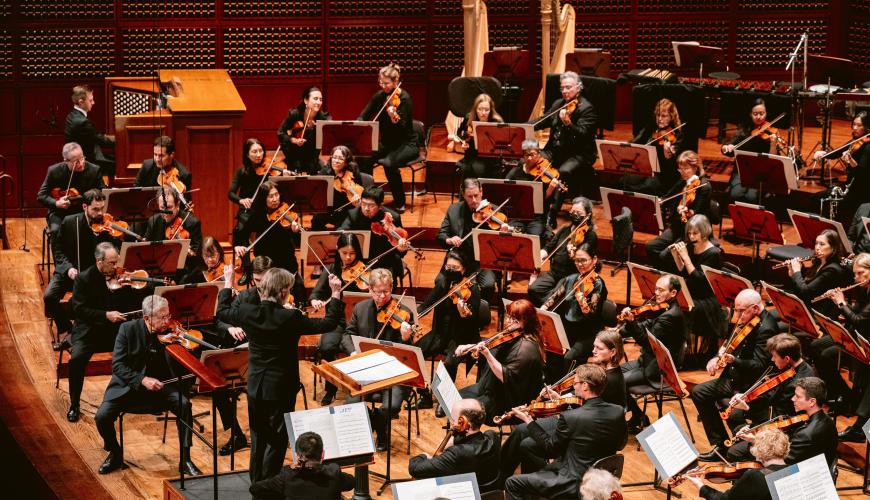
For both of the San Francisco Symphony’s California Festival programs, Music Director Esa-Pekka Salonen chose to contrast works by living California composers with several pieces by one of the state’s great musical immigrants, Igor Stravinsky. (Decide for yourself whether Salonen, whose kínēma was on the first program, is a California composer or a notable immigrant.) The second program on Nov. 17, “From the Edge,” included Stravinsky’s 1923 ballet score Les noces (The wedding) and his Octet for Wind Instruments, composed that same year and revised in 1952.
The big news of the concert, though, was the local premiere of Gabriella Smith’s awe-inspiring new organ concerto, Breathing Forests. In its three contiguous movements — “Grow,” “Breathe,” and “Burn” — Smith effectively takes you through the life cycle of a living forest. She composed the concerto for organist James McVinnie on commission from the Los Angeles Philharmonic, where Salonen led the first performances last year. McVinnie was the soloist for the SF Symphony performances as well.
Forests are close to Smith’s heart, for the Bay Area native, 31, has been involved with environmental research and restoration since she was a teen. In her prefatory remarks, she referred to the organ as “a forest of pipes” and to the “destructive and regenerative nature of fire,” which she tried to reflect in the concerto.
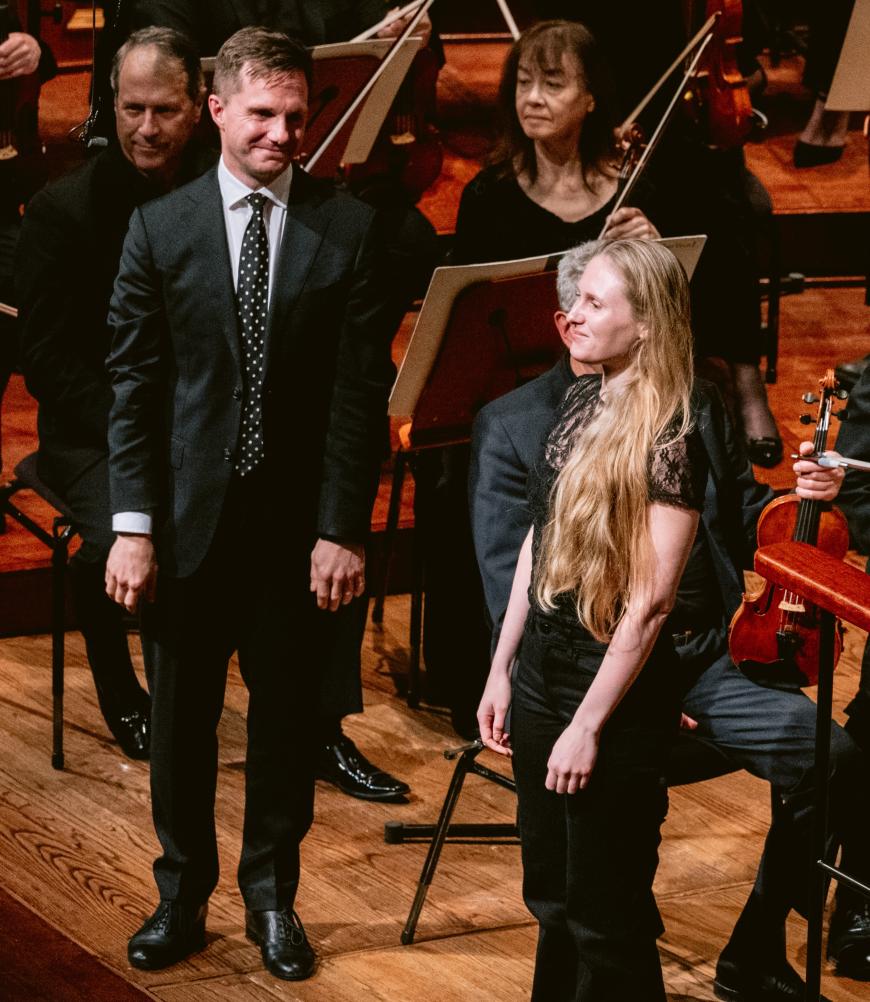
Her wondrous orchestration of the half-hour concerto evokes all the sounds that you can find in a forest: whistling birdsong, wind, thunder, and more. The orchestra slithers, chatters, creaks, rustles, and groans. Does a forest breathe slowly or rapidly? What are the sounds of roots and leaves? Can humans even know the answers? No matter: The organ, the mightiest of all instruments, is the concerto’s proxy for the forest itself.
Smith deploys the organ for its matchless tonal variety, giving it nimble solo lines while also making its sustained sound a constant brooding presence that underpins the orchestral writing. The solo instrument and the ensemble aren’t in opposition to each other, as in so many concertos, but rather they create a dense, complex, and complementary texture. And because the organ is such a sonic chameleon, you couldn’t always tell where a particular sonority was coming from.
Sometimes the organ provides sheer cacophony and volume, thunderous sounds that resonate deep in your body. At what might have been the loudest point in the concerto, well into “Breathe,” McVinnie had at least one forearm splayed flat across the keyboard, creating a huge dissonance that then died away slowly to rustling wind sounds.
“Burn,” the climactic movement, opens with a truly astonishing array of sounds in the orchestra, largely coming from the strings but also from the winds. A combination of harmonics, plucked strings, and extended bowing techniques sounds eerily like the first quiet cracklings of a fire.
“Burn” grows into a mighty conflagration, the sonic mass pierced by trumpets and capped by what seems to be a cadenza for the full orchestra and organ. All praise to Smith for this mighty and overwhelming work and to McVinnie and the SF Symphony for the majesty of their performances.
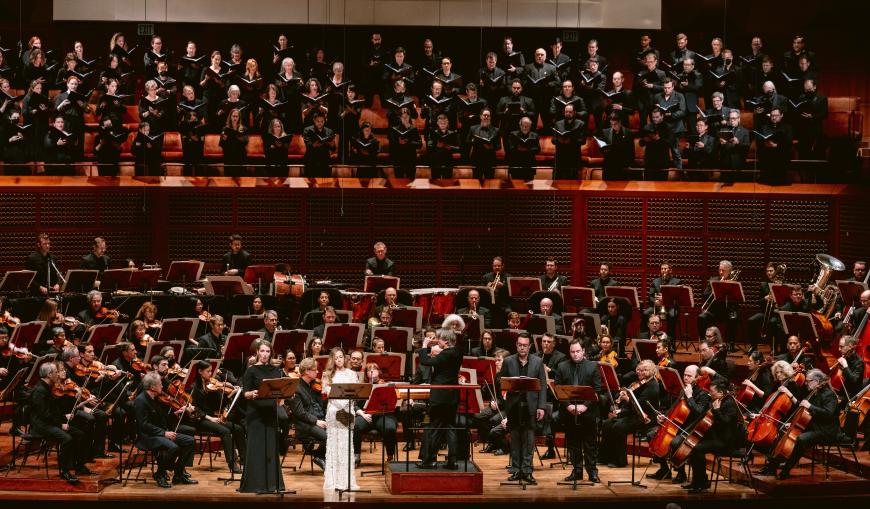
Stravinsky labored mightily for a decade over Les noces, creating multiple drafts for vastly different ensembles before finally settling on four pianos, four percussionists, four vocal soloists, and chorus. In 2005, when Salonen was music director of the LA Phil, he commissioned the composer Steven Stucky to create a version for full orchestra as a companion piece to The Rite of Spring.
Stucky’s notes for his arrangement provide little justification for a new orchestration of Les noces beyond an attempt to emphasize its compositional closeness to The Rite. And indeed, his setting proved to be at best a curiosity, one that need not be heard again. The full-orchestra arrangement doesn’t succeed in its stated goal, in part because Stucky’s orchestration pales by comparison to that of The Rite. And Les noces loses the percussive force and power that come naturally in the four-piano version, with little concomitant gain.
Some of Stucky’s choices are simply bad, such as sustained string tone in the closing minute or so of the piece, where Stravinsky’s orchestration creates a rapt, magical silence punctuated intermittently by sharply struck chords in the pianos and percussion. Stucky’s arrangement has the overall effect of unnecessarily softening the edges of a hard-edged work.
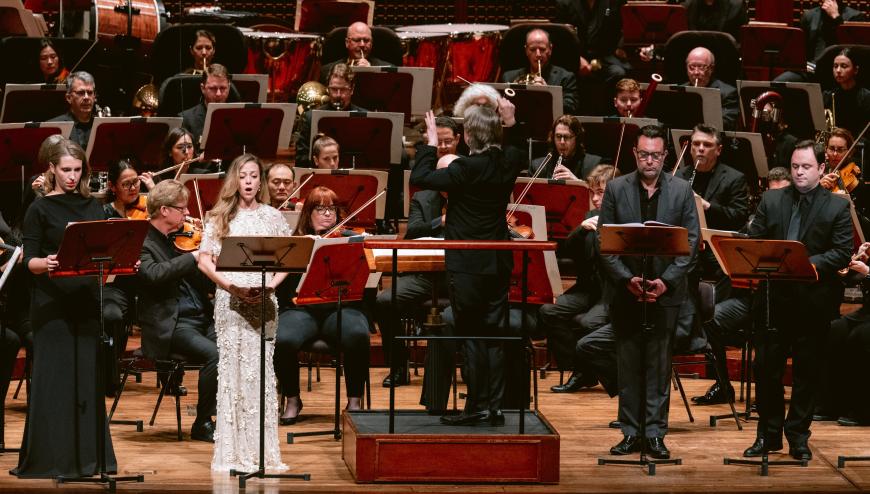
On Friday, the sonic variety and sheer volume of the full orchestra, plus the chorus’s location in the terrace of Davies Symphony Hall, obscured the choral sound and muted the interplay between chorus and soloists. The SF Symphony Chorus members sang their difficult parts with precision, enthusiasm, and good sound. One could only wish that they’d had more sonic prominence.
Salonen led a fast and exciting performance that was satisfying in many ways, yet he missed much of the dramatic nuance in Les noces. There wasn’t sufficient contrast of mood or tempo between adjacent sections. Some of the tenderness of the story got lost, as did the developing drunken revelry as the wedding celebration progresses.
Soprano Lauren Snouffer and bass David Soar stood out among the soloists, with Snouffer’s brilliant voice easily surmounting the large orchestra. Soar’s solos were firm and appropriately Slavic in tone. SFS Chorus bass Chung-Wai Soong joined him gorgeously in the brief bass duet. Mezzo-soprano Kayleigh Decker was difficult to hear. Tenor Paul Appleby was satisfactory. All four major soloists would likely have done more had the tempos given them more room.
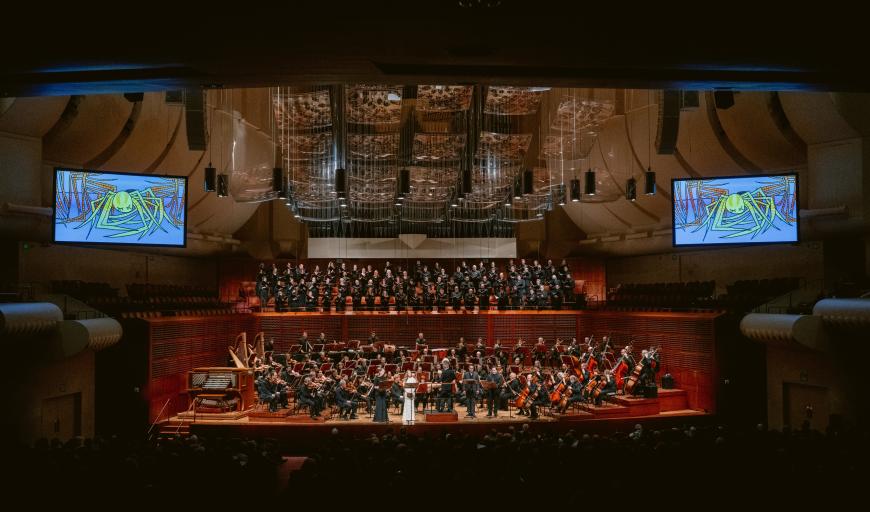
Several SFS programs this season are including some sort of visual accompaniment, and Les noces featured animations by Hillary Leben, who also provided them for the orchestra’s presentation of Beethoven’s The Creatures of Prometheus last year. Unfortunately, Leben illustrated Les noces with a misguided and wholly inappropriate barrage of cartoon insects dancing in a bathtub, a sink, a toilet, and a swimming pool. Because the animations were on screens to the sides of the stage, it was possible to ignore them. But the program booklet didn’t include Stravinsky’s libretto, so you had to at least glance at the screens to see the partial text that Leben included.
In the program, the animator says that “above all [she] really wanted people to laugh!” But Les noces isn’t a comedy. It’s about the hopes and fears of two young people and their place in their community at a crucial moment of change. What do dancing insects have to do with that?
The program opened with Stravinsky’s Octet, composed for the oddball ensemble of flute, clarinet, two bassoons, two trumpets, trombone, and bass trombone. This little work looks back to the sonorities of the composer’s great early ballets, albeit writ small, and looks forward to the sound world and wit of The Rake’s Progress (or perhaps the Octet acquired that sound upon revision). The piece received a jaunty, wry performance, maybe with a few minor ensemble mishaps.


